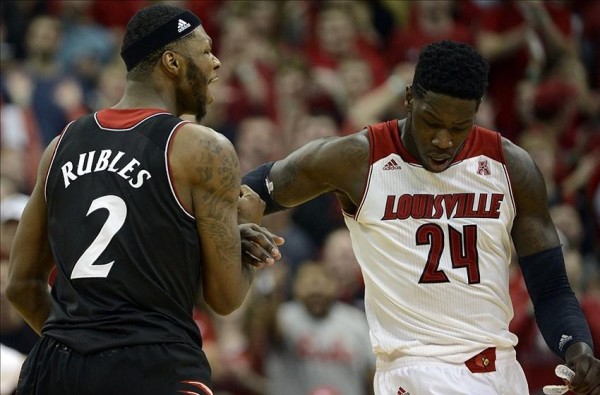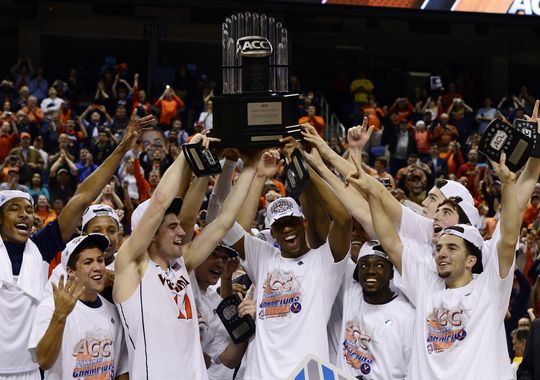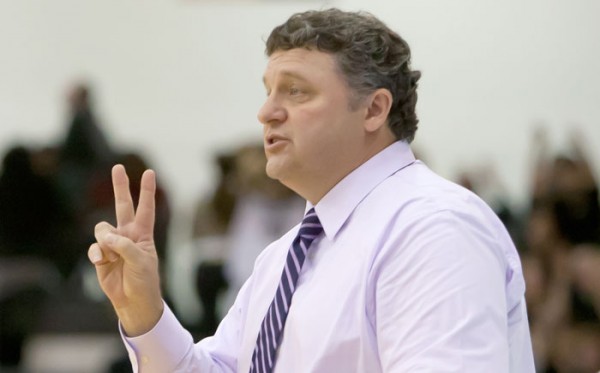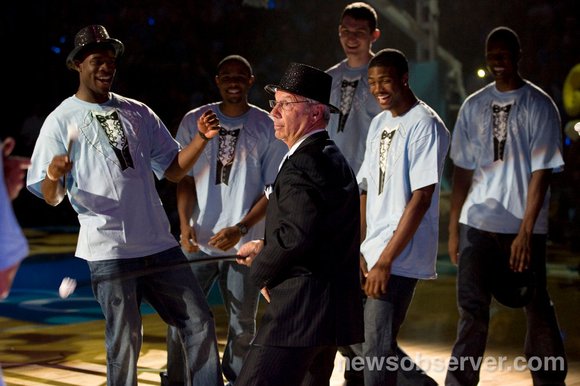National Championship Preview: North Carolina/Villanova Will Win If…
Posted by Tommy Lemoine & Bennet Hayes on April 4th, 2016Only one game remains this college basketball season, and it tips off in about six hours. What needs to happen for North Carolina and Villanova if they expect to win a National Championship in Houston later tonight? Here are the keys to victory for both sides.
North Carolina Will Win If…
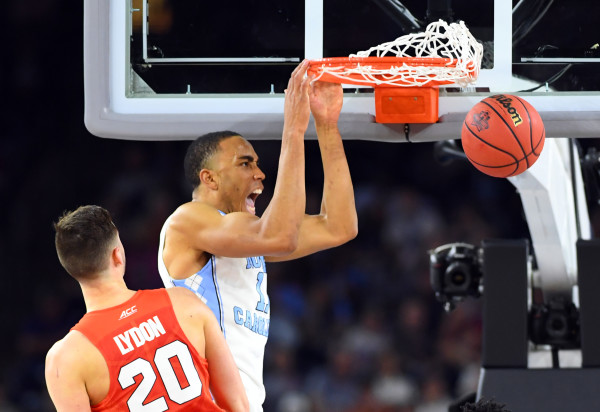
Brice Johnson and North Carolina must rule the interior on Monday night.(Photo: Bob Donnan-USA TODAY Sports)
- The Tar Heels’ front line imposes its will. Five North Carolina regulars are 6’8” or taller, a fact that will matter even more than usual against a Villanova team with a de facto starting power forward (Kris Jenkins) who is just 6’6”. The Wildcats will have their hands very full with Brice Johnson, Kennedy Meeks and the rest – particularly on the backboards. Jay Wright has found plenty of advantages to exploit with his smaller lineup, but there’s no denying that the undersized Wildcats will be playing at a significant disadvantage when the ball comes off the rim. Villanova ranks 209th and 134th nationally in offensive and defensive rebounding percentages, respectively, and gave up 19 offensive rebounds to Oklahoma on Saturday (about the only thing the Wildcats didn’t do well). No shift in offensive philosophy is needed tonight, but expect North Carolina to wage a full-blown assault on its offensive backboard.
- Joel Berry is effective offensively. Senior Marcus Paige is usually noted as the most effective barometer for the Tar Heels’ offense, but it has been the play of Berry this season (not Paige), that has more closely correlated with the overall success of North Carolina. Berry has averaged 12.6 points and 3.8 assists per game this season, but has managed only 9.8 PPG and 2.2 APG in UNC’s six losses. He had eight points, 10 assists and seven rebounds on Saturday against Syracuse; finding a way to have a similarly significant impact against Villanova’s tenacious perimeter defense will take a lot of the pressure off the UNC frontcourt.
- They make Villanova take difficult three-point shots. Carolina’s length is sure to bother a Villanova team that has excelled inside the arc this season (the Wildcats rank second in the country in shooting 57.3 percent on two-point field goals), so expect them to rely on the three-point shot even more than they normally do. Forty-three percent of Villanova’s field goals come from behind the arc, (29th highest mark in the nation), and while they don’t shoot an outstanding percentage from there (35.9%), nearly every Villanova regular is a threat to convert — six Wildcats have made at least 23 three-pointers this season. North Carolina has not defended the arc well this season – the Heels rank 247th nationally in allowing opponents to shoot 35.9 percent from three – but must be able to challenge Villanova’s shooters tonight.
- They don’t turn the ball over. The North Carolina recipe for offensive success, in its most succinct form, is to limit turnovers and collect offensive rebounds. Doing the former will not be easy against a pesky Villanova team that will surely look to utilize its disruptive 1-2-2 press, but it will be no less important. The more field goal attempts that go up, the more offensive rebounds that will be available to a North Carolina frontcourt that is the Tar Heels’ biggest advantage in this game.





























